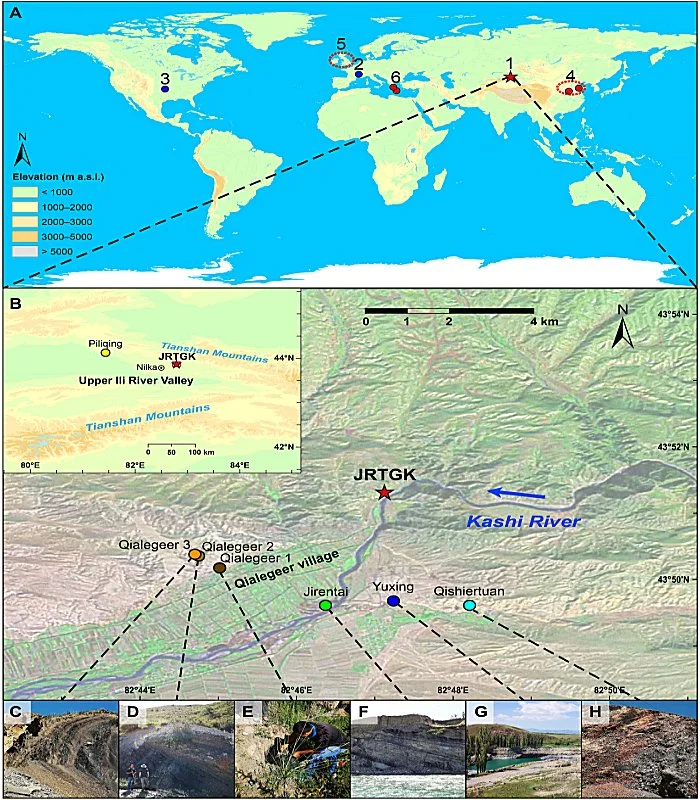Bronze Age Coal Use: Evidence of Systematic Coal Usage Unearthed in Ancient China
A large team of archaeologists affiliated with multiple institutions in China and the U.K. has found evidence of systematic coal use by Bronze Age people in what is now China.

(A) Places known for the early utilization of coal fuel: (1) JRTGK (this study), (2) two Paleolithic sites in southern France (14, 15), (3) Lewisville Paleolithic site in North America (13), (4) sites with reported use of coal for fuel in central China (16, 20), (5) Roman Britain (19), and (6) two Late Bronze Age sites with evidence of lignite combustion in eastern Mediterranean (17). (B) Geographic setting of JRTGK and the relevant coal outcrops. (C to H) Images of the coal outcrops near the site, with dashed lines indicating their positions.
In their paper published in the journal Science Advances, the group describes their findings at a dig site called Jirentaigoukou in northwest China.
Prior research has shown that use of coal as a fuel source goes back many thousands of years, and its systematic use approximately 2,500 years.
In this new effort, the researchers found evidence of systematic use approximately 3,700 years ago.
The work was part of a large dig effort at Jirentaigoukou—a project that has shown that two civilizations lived there nearly 1,000 years apart.
The bottom level, the oldest, has been studied by other groups. The team on this new effort focused their attention on the layer that preserved evidence of habitation between 3,000 to 3,700 years ago—during the Bronze Age.
In addition to many artifacts, dig teams have unearthed coal from ancient fireplaces, storage pits, homes, smelting furnaces and near tool caches.
Such a wide variety of sites, the researchers suggest, indicates that the use of coal was well established and it was used in many ways, including cooking food, heating homes, smelting metal and making weapons and tools.
Or put another way, it suggests systematic coal use, nearly 1,000 years earlier than any previously known example.

The research team notes that in addition to the use of coal, the upper level of the dig site showed that much had been learned over the prior 1,000 years, such as growing crops, domestication of animals and the development of bronze processing.
They also state that it was likely that the use of coal was adopted as wood became scarcer in the area.
They also suggest that replacing wood with coal was likely a natural progression, as there was plenty of coal at or near the surface in the area, and the idea of using it as a fuel source likely was not much of a leap—coal has been known to combust naturally when exposed to the sun on a hot day.




